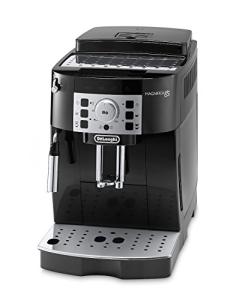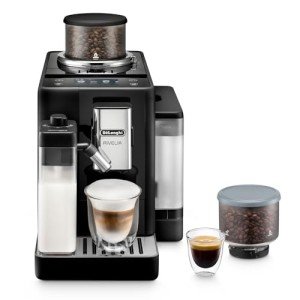Company Overview
-
Founded Date April 23, 2014
-
Posted Jobs 0
-
Categories Marine Mammals
Company Description
10 Steps To Begin Your Own Espresso Coffee Machine Business
Espresso Coffee Machines: A Comprehensive Guide
Espresso, often referred to as the “heart” of coffee culture, acts as the basis for numerous cherished coffee drinks such as lattes, coffees, and macchiatos. An espresso coffee machine is important for any coffee enthusiast seeking to unlock the full potential of coffee brewing at home or in a café. Comprehending how these sophisticated machines work and the numerous types available can raise the coffee-drinking experience. This blog site will offer comprehensive insights into espresso coffee machines, assisting readers make notified options.
Kinds Of Espresso Coffee Machines
At the core of any terrific espresso is the coffee machine that brews it. Espresso machines been available in a number of ranges, each with unique features and functionalities. The following table summarizes the different types.

| Type of Espresso Machine | Description | Pros | Cons |
|---|---|---|---|
| Manual Espresso Machine | Needs the user to by hand control pressure and water circulation. | Offers complete control over the brew; great for coffee perfectionists. | Steeper learning curve; time-consuming. |
| Semi-Automatic Machine | Allows users to manage the water circulation, however has automatic pressure. | Balance of control and benefit; popular among home users. | Still requires some ability and understanding. |
| Completely Automatic Machine | Automates grinding, tamping, and brewing. | Easy to use; excellent for hectic lifestyles. | Less flexibility; may produce less nuanced flavors. |
| Super-Automatic Machine | Provides one-touch brewing and milk frothing features. | Incredibly convenient; best for hectic individuals. | Higher expense; less manual engagement. |
| Capsule Machine | Uses pre-packaged coffee pills for brewing. | Quick and mess-free; easy to clean. | Restricted coffee range; additional cost for capsules. |
Selecting the Right Espresso Machine
Choosing the ideal espresso machine depends on various factors that align with your individual coffee choices and use habits. Below are key factors to consider.
1. Ability Level
- Beginners: Opt for a completely automatic or capsule machine for ease of use.
- Intermediate: A semi-automatic machine uses a balance of control and benefit.
- Advanced: Manual machines provide deep engagement in the brewing procedure.
2. Budget
- Entry-Level: Capsule and some semi-automatic machines vary from ₤ 100 to ₤ 500.
- Mid-Range: Quality semi-automatic alternatives are available from ₤ 500 to ₤ 1,500.
- High-End: Professional machines and super-automatics can surpass ₤ 1,500.
3. Area Considerations
- Offered counter top space must dictate the size of the machine.
- Compact machines are available for small cooking areas, while larger systems might use additional functions.
4. Functions
- Integrated Grinder: Freshly ground coffee improves flavor; fantastic for enthusiasts.
- Frother: Essential for making milk-based drinks.
- Temperature level Control: Important for attaining the ideal extraction.
5. Upkeep
- Regular upkeep is vital for optimum efficiency.
- Try to find machines with easy-to-clean functions or self-cleaning alternatives.
Different Components of Espresso Machines
A well-crafted espresso machine consists of various elements, each playing a crucial function in developing.
| Element | Function |
|---|---|
| Boiler | Warms water to the wanted temperature level for brewing. |
| Pump | Generates the pressure required to extract flavors from coffee grounds. |
| Portafilter | Holds the coffee premises and plays a crucial role in flavor extraction. |
| Steam Wand | Froths milk for lattes or coffees. |
| Pressure Gauge | Shows the pressure throughout extraction, assisting in consistency. |
Developing the Perfect Espresso
Developing an elegant espresso is part science and part art. Here’s a simple step-by-step process for crafting the ideal shot.
- Select Quality Beans: Choose fresh, top quality coffee beans. Select medium to dark roasts for Coffeee.Uk conventional espresso.
- Grind to Perfection: Use a burr grinder to accomplish a fine and consistent grind size. Objective for a texture similar to table salt.
- Dose and Tamp:
- Measure the coffee (normally 18-20 grams for a double shot).
- Firmly tamp the grounds in the portafilter to develop an even surface.
- Developing:
- Lock the portafilter into the machine.
- Start the brew and objective for a 25-30 second extraction time.
- Examine Crema: The leading layer of your espresso should be a rich, golden crema.
Frequently Asked Questions (FAQs)
Q1: What is the difference in between espresso and regular coffee?
A: Espresso is brewed by requiring warm water through finely-ground coffee at high pressure, leading to a concentrated coffee shot with a distinct crema. Regular coffee is usually brewed using a drip approach or a French press, producing a lighter drink.
Q2: How typically should I clean my espresso machine?
A: It is suggested to clean your espresso machine after every usage. Perform a comprehensive cleaning weekly, including descaling, to guarantee longevity and great-tasting coffee.
Q3: Can I use regular coffee beans for espresso?
A: While you can use routine coffee beans, it’s best to choose coffee specifically identified for espresso. The roasting profiles and grind sizes boost the espresso’s distinct flavors.
Q4: Are pricey machines worth the investment?
A: Higher-priced machines often include better build quality, more functions, and remarkable performance. For devoted coffee fans, the investment can substantially improve their coffee experience.

Q5: How can I froth milk without a steam wand?
A: Use a French press or a frother to by hand froth milk. Merely heat the milk and pump it with the press or frother up until it reaches the desired texture.
Buying the ideal espresso coffee machine is a journey worth considering any coffee enthusiast. From manual machines for control enthusiasts to super-automatics created for quick developing, there is an alternative for everyone. The art of developing espresso lies in understanding the nuances of the machine and mastering the developing process. Whether enjoyed solo or as part of a coffee drink, a well-prepared espresso captures the essence of coffee culture, providing a scrumptious experience sure to impress. With the correct understanding and tools in hand, anyone can check out the rich world of espresso in your home or boost their coffee shop offerings. Happy developing!

